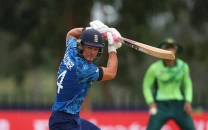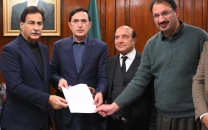Implementation of SNC in Pakistan: a mammoth task
SNC is an intervention that is going to disrupt the very fabric of our social structure

Recently the Ministry of Federal Education and Professional Training decided to implement the Single National Curriculum (SNC) in all the public and private schools. The aim is to introduce “one system of education for all, in terms of curriculum, a medium of instruction and a common platform of assessment so that all children have a fair and equal opportunity to receive a high-quality education”. Many consultations with different stakeholders are organised for their input. An in-depth review of past education policies and input of the stakeholders highlight the conflict between the principles of SNC and the contemporary social structure of Pakistan. Thus, the government will have to struggle, if not fail, to implement it fully.
Divisive social structure of Pakistan
Pakistan has inherited some cultural legacies from the traditional Indian society, where people were divided into hierarchical caste groups based on their karma (work) and dharma (duty). Brahmins were to be priests or scholars; Kshatriyas to be kings, governors, and warriors; Vaishyas to be cattle herders, agriculturists, artisans, and merchants; and Shudras to be labourers and service providers. Each of these groups represents an institution, which has to follow certain norms, customs, and traditions. Herbert Spencer, a famous English sociologist, called such a society “functional” in nature, where different institutions, interdepend on each other, and have to operate in harmony. The success of such a society is based on the idea that the members of each institution and their offspring remain in the same institution. Thus, the son or daughter of a Brahmin had to be a scholar and of a Shudra be a labourer. Over time, these terms have faded, but the overall social dimensions remain the same in today’s India and Pakistan.
School systems to reinforce social division
The contemporary society of Pakistan is still divided into such social groups and our school system nourishes and safeguards this social division. Five parallel school systems are operating in Pakistan that produce human resources for different social institutions. For our super-elite, we established what Dr Tariq Rehman termed “elite English private schools” offering superior quality, super expensive education. For our bureaucracy and army, we have elite government-subsidised English schools offering superior quality education on subsidised rates to the aforementioned group only. For middle and lower-middle classes, we have allowed anyone to open a “so-called English school (SCES)”, offering affordable education of average quality. For the commoners, we have vernacular medium government (VMG) schools that offer free poor-quality education. Finally, for the very poor, we established madarassas. Each school system produces human resources for a particular social class. The overall structure — including fees, entry criteria, and most importantly unique curriculum — of these schools ensures that only the representatives of the suitable social class join these educational clubs.
Social disparity mirrored in higher education
This trend was confined to schools till the 1980s considering that only a few public-sector universities operated in Pakistan and that most graduates of good schools and a few “change agents” from poor schools continued their higher studies. The rest of the masses joined their respective labour fields. However, the emergency of globalisation brought Pakistan to the limelight with its low percentage of higher education graduates. This international pressure along with domestic politics introduced a surge of private universities in the country. Now, we see diverse types of higher education institutions that mirror our socially divisive school system.
The previously highly reputed public sector interdisciplinary universities were systematically forced to make their entry and exit criteria easy for the commoners to have a higher education certificate. Many affiliated colleges were introduced with no mechanism to ensure quality or merit. These institutions provide easily affordable higher education certificates to the graduates of vernacular and cheap so-called English schools, who mostly fill low-paying labour positions. Thus, the contribution of these institutions is two-fold: to upgrade the certification of the labour class, and to improve our statistics of higher education graduates in the global literacy index. At the same time, we have established highly elite private and government-supported higher education institutions that require their prospective candidates to be both financially and academically elite. Only the members of exclusive social class can join these institutions to become the Brahmins and Kshatriyas of our society. In such a functional social structure, introducing the SNC is going to be a mammoth challenge for the government.
Challenges to implementing SNC
The biggest challenge in implementing SNC is the resistance from the guardians of each social institution. The people involved in managing different types of schools have worked hard to legitimise their practices and have put in great efforts to set the bar of parental and students’ expectations from their respective school systems. It is difficult for them to either raise or lower their standards. For example, elite English schools won't be able to justify lowering their standards and the use of SNC for their exclusive “customers”. If these schools offer the same quality and material as the one offered in the VMS and SCES, then they would lose their exclusiveness, thus losing their exclusive elite customers. In fact, their exclusive elite customers won't want to lose these exclusive education clubs. Thus, there will be resistance from both school owners and their potential customers.
Likewise, the guardians of SCES are enjoying loose governmental quality and management regulations. Thus they teach whatever suits them and their mediocre customers. They hire untrained teachers on a very low wage and prefer a mediocre curriculum to fulfil the needs of their lower-middle-class customers. The SNC would put pressure on both the school owners and their teachers to raise their quality standards which would disrupt their system. Although parents may be excited to receive better quality universal education, they would fear that the school management would make SNC implementation an excuse to increase the fees.
Finally, the guardians of our government schools have created a culture where untrained teachers, hired on political influence, are teaching outdated courses without any monitoring and evaluation from either government or parents. There is mutual conscience among all the stakeholders on the way things operate in such schools. Introducing the SNC in these schools would create havoc not only for school management and teachers but the provincial governments too. Thus, implicit efforts will be made to sabotage the implementation of the SNC. In short, SNC is an intervention that is going to disrupt the very fabric of our social structure, and implementing it requires a systematic and strategic approach, which is missing — at least for now.



















COMMENTS
Comments are moderated and generally will be posted if they are on-topic and not abusive.
For more information, please see our Comments FAQ